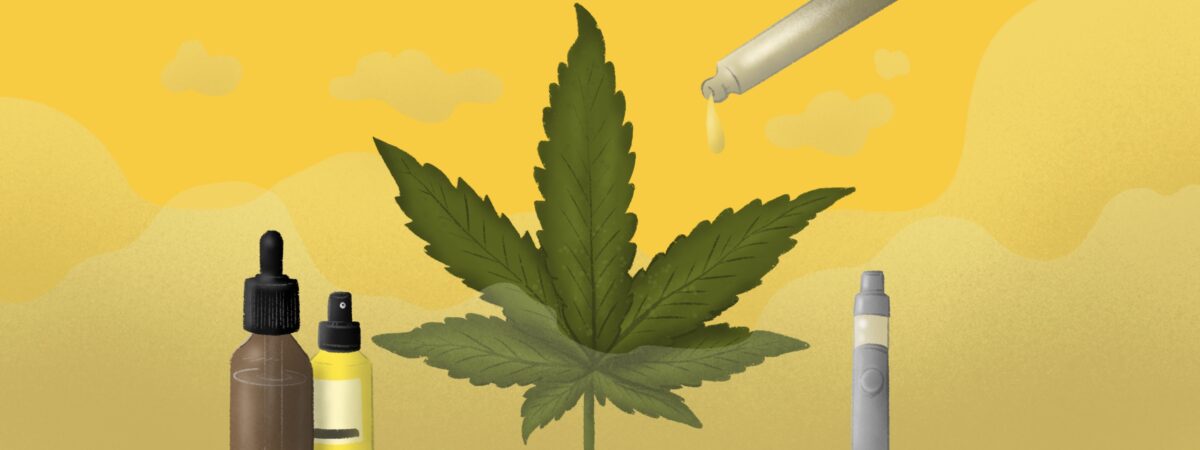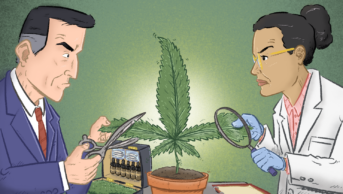Medical cannabis was hailed as a breakthrough for patients when it was legalised in the UK in 2018. However, obtaining medical cannabis via the NHS has proven difficult, with only three licensed cannabis-based medicines available and a lack of randomised controlled trial (RCT) evidence for unlicensed products limiting their prescribing.
Since November 2018, fewer than five NHS prescriptions for unlicensed cannabis-based products for medicinal use (CBPMs, see Box 1) have been dispensed in England per month, the NHS Business Services Authority confirmed in response to a freedom of information request in August 2023, with the number of items attributed to “fewer than five” patients.
In contrast, the lack of RCT evidence has not deterred an explosion of private prescriptions for unlicensed CBPMs, with more than 140,000 prescription items dispensed between November 2018 and November 2022 (see Figure 1). The Medical Cannabis Clinicians Society estimates that around 31,000 patients are accessing unlicensed CBPMs privately.
Box 1: What is a cannabis-based product for medicinal use?
Cannabis-based products for medicinal use (CBPMs) are defined in the Misuse of Drugs Regulations 2001 (MDR) (as amended) as products that:
- Contain cannabis, cannabis resin, cannabinol or a cannabinol derivative;
- Are produced for medicinal use in humans;
- Are regulated as a medicinal product or an ingredient of a medicinal product.
In a summary of key information for prescribers issued in August 2023, NHS England says the definition of a CBPM is broad to account for the range of preparations that are cannabis-based and have been used for therapeutic purposes, and to ensure that raw products/ingredients and intermediate products are captured. It adds that this is essential to ensure that a patient will be able to access appropriate CBPMs to meet the requirements of any prescription where there is a clinical need.
Product categories
The categories of cannabis-derived products on the market in the UK can be confusing for patients, consumers and healthcare professionals (see Figure 2). Each product contains varying ratios of the two most studied cannabinoids — cannabidiol (CBD) and tetrahydrocannabinol (THC). THC is the psychoactive component of cannabis, whereas CBD does not produce psychoactive effects.
Licensed cannabis-based medicines — including Sativex (GW Pharmaceuticals), Epidyolex (GW Pharmaceuticals) and nabilone (Brown & Burk UK) — are in schedules 2 to 5 of the Misuse of Drugs Regulations 2001 and can be prescribed in the same way as other medicines in these schedules, subject to the relevant controlled drug requirements. The same is true of licensed CBPMs, although there are currently none of these available in the UK.
Unlicensed CBPMs are schedule 2 controlled drugs and, owing to their limited evidence base and unlicensed nature, can only be prescribed initially by clinicians listed on the General Medical Council’s specialist register. Other doctors and pharmacists can prescribe follow-up prescriptions under a shared care agreement.
There is also an abundance of CBD-containing food and consumer products available on the high street; however, these are not medicinal products and are not controlled under the Misuse of Drugs Regulations 2001.
Recreational cannabis is a schedule 1 controlled drug and cannot be prescribed.
Indications
National Institute for Health and Care Excellence (NICE) guidance issued in 2019 recommends the licensed cannabis-based medicines for the following conditions:
- Moderate-to-severe spasticity owing to multiple sclerosis (Sativex);
- Seizures associated with Lennox-Gastaut syndrome or Dravet syndrome, in conjunction with clobazam (Epidyolex);
- Chemotherapy-induced nausea and vomiting (nabilone).
There are no legal restrictions for which indications specialist doctors can prescribe unlicensed CBPMs, although they should always consider medicines licensed for the specific condition first.
Private clinics vary in what conditions they are willing to prescribe for and what treatments patients must have already tried before they are eligible for medical cannabis.
According to data from Project Twenty21, Europe’s largest national medical cannabis registry, the most common primary conditions that unlicensed CBPMs are prescribed for in the private sector are chronic pain and anxiety conditions. The most common individual conditions are post-traumatic stress disorder, back and/or neck pain and multiple sclerosis (see Figure 3). NICE recommends that medical cannabis should not be offered for managing chronic pain in adults unless it is part of a clinical trial because there is insufficient evidence for its efficacy and long-term safety.
Main product types
There are several ways of ingesting medical cannabis. Licensed products come in the form of an oromucosal spray (Sativex), capsules (nabilone) and oral solution (Epidyolex).
For unlicensed CBPMs, the main forms are whole plant oil and dried flowers (see Figure 4). Oils can be taken orally, sublingually or through vaping, while flowers are taken through vaping. Smoking remains illegal.
Dosing guidance
Dosages of licensed cannabis-based medicines are set out in their summaries of product characteristics. For most, doses are titrated upwards gradually according to tolerance and clinical effect.
For unlicensed, whole-plant products, the same principle applies: start low and go slow (see Figure 5). These products contain different ratios of CBD and THC and prescribers will decide on the most appropriate balance and dose for each patient, which can vary considerably.
Box 2: Contraindications
There are contraindications to use of medical cannabis, including:
- For THC-containing products — a history of schizophrenia or psychosis or a family history of these conditions in a first-degree relative;
- For THC-containing products — a heart condition that could be exacerbated by a high pulse; for example, recent myocardial infarction or unstable cardiac disease;
- Cannabis hyperemesis syndrome (a rare complication, mainly occurring in high-THC street product users);
- Cannabis use disorder;
- History of allergy to cannabis or carrier oils;
- Pregnancy or breastfeeding.
Source: Primary Care Cannabis Network
Drug interactions
THC is metabolised by the enzymes CYP2C9 and CYP3A4, meaning that drugs that inhibit these enzymes may increase THC concentrations. Poor CYP2C9 metabolisers will have higher levels of THC compared with normal metabolisers. CBD is metabolised by CYP3A4 and CYP2C19 (see Figure 6).
If doses are gradually increased, there should not be any significant interactions that contraindicate use of medical cannabis.
Cannabis may also impact on metabolism of some drugs, including warfarin, theophylline, chlorpromazine, clobazam. Pharmacodynamic interactions may happen between cannabis and sympathomimetics, anticholinergics and central nervous system depressants.
Editorial adviser: Mike Barnes, consultant neurologist and medical cannabis expert, chair of Cannabis Industry Council, chair of Medical Cannabis Clinicians Society and director of Maple Tree Medical Cannabis Consultancy



